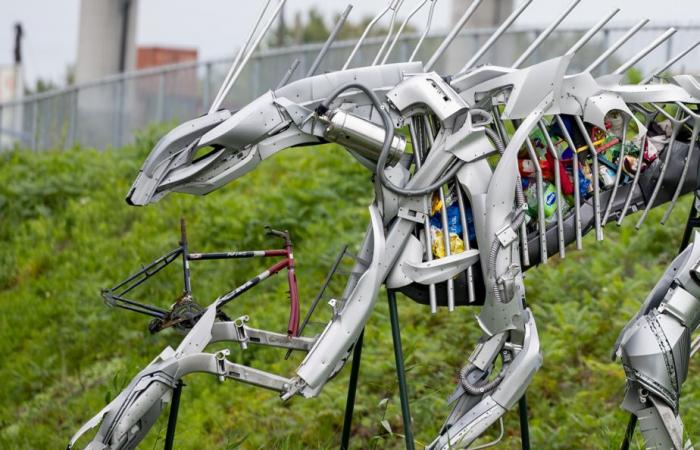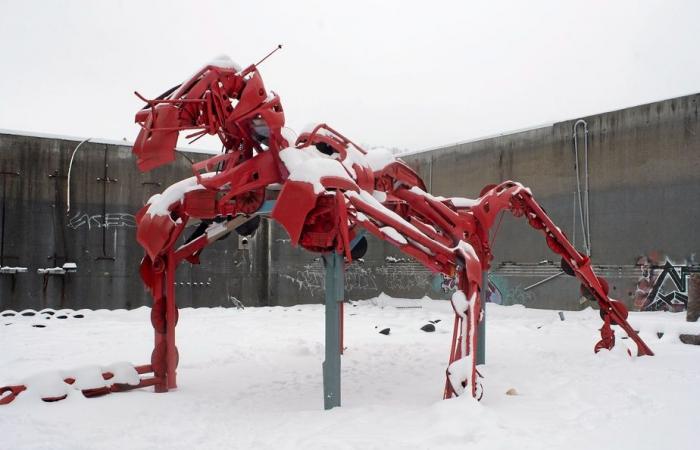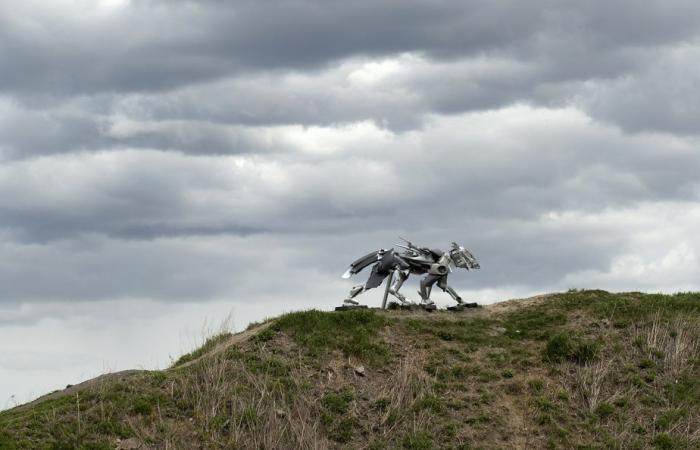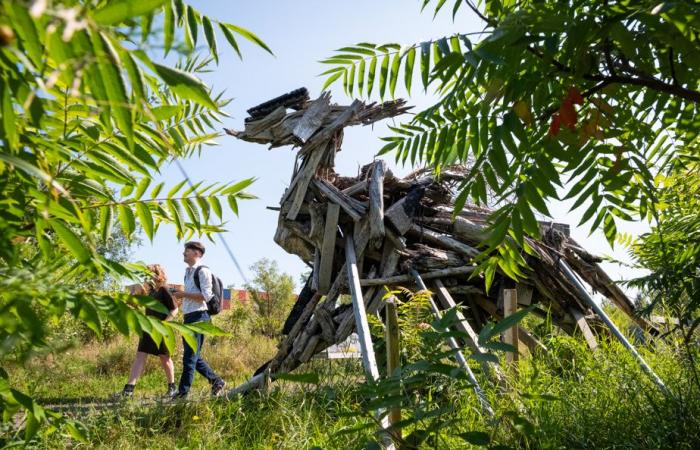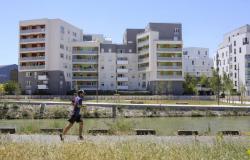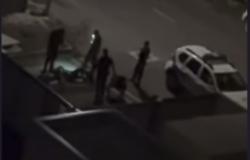Our journalist travels around Greater Montreal to talk about people, events or places that mark urban life.
Published at 12:42 a.m.
Updated at 5:00 a.m.
An impressive metallic animal creature appeared during the summer near Wellington Basin. It is the work of the man whose artist name we only know: JUNKO. Like Banksy, his sculptures appear in public spaces anonymously.
JUNKO prefers not to grant long interviews to preserve the mystery of his art. He still exchanged a few emails with us. His artist name refers not to the junco bird species, but to the word “waste” in English (junk), which is at the heart of his approach.
Last year, at the invitation of MURAL, the artist installed a work of public art called BIXObuilt from irreparable BIXI bicycle parts.
PHOTO PROVIDED BY MURAL
This sculpture by JUNKO is made from obsolete BIXI bicycle parts.
JUNKO has a unique way of combining abandoned materials to give them a second life by transforming them into fascinating creatures.
Catherine Matusiak, director of communications at MURAL
His futuristic-looking sculptures – whose installation is often unauthorized – represent beasts, natural or fantastic, which can be made up of abandoned car parts, old household appliances or even scrap plastic.
JUNKO considers the space where he exhibits his creations as a form of “habitat”. Their location, often in vacant lots or with an industrial past, constitutes a message in itself. “JUNKO is undoubtedly an original and innovative artist on the local urban art scene. Its installations populate the Montreal landscape,” argues Catherine Matusiak.
The artist is also featured in the immersive exhibition Detours-Urban encounters presented at the Center des memories montrealaises, which presents unusual characters from Montreal.
Consult the exhibition page at the Montreal Memories Center
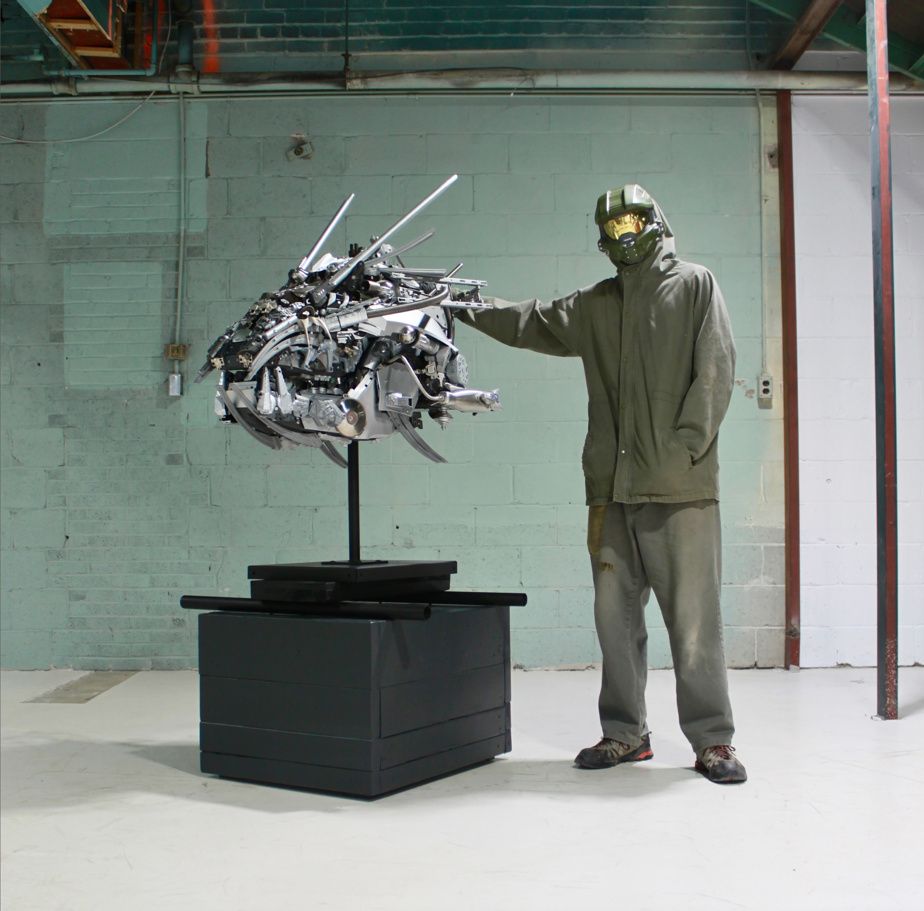
PHOTO FROM THE INSTAGRAM ACCOUNT @JUNKO.PLAYTIME
A rare photo of the one we guess is JUNKO
In Montreal and elsewhere
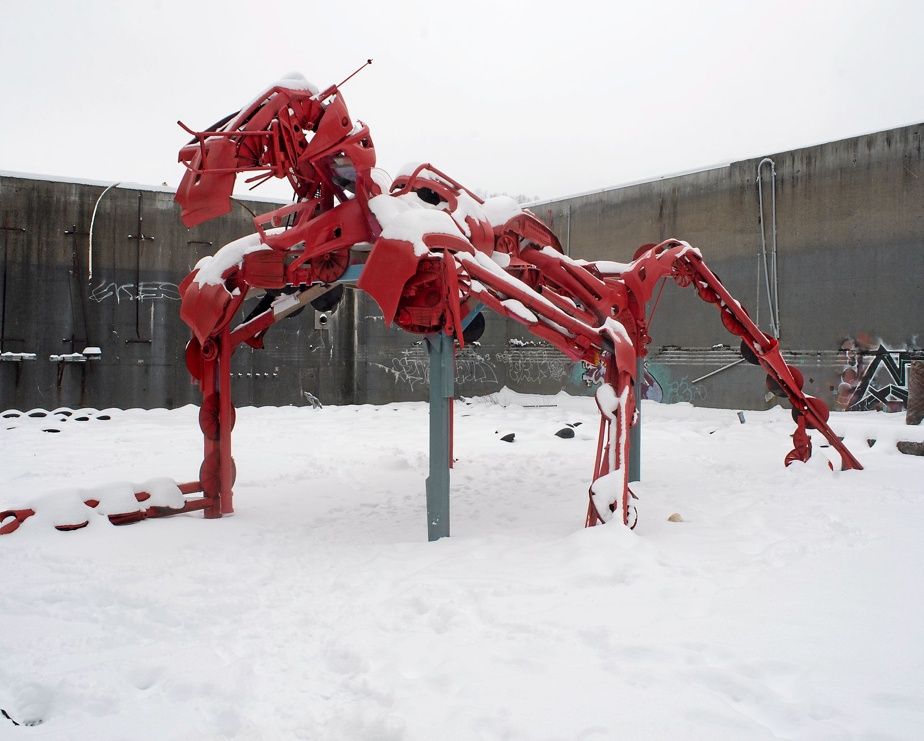
PHOTO SYLVAIN MAYER, ARCHIVES THE NEWSLETTER
The work of JUNKO which stands in the ruins of the former Belgo factory in Shawinigan, photographed last winter.
By email, JUNKO indicated to The Press that he is not in Montreal at the moment.
In recent years, it has appeared in other Canadian cities and even in Shawinigan on the site of the former Belgo factory. Last year, in Vancouver, he hung a large spider under an overpass that could be seen from the SkyTrain light rail. JUNKO had not requested authorization so the City wanted to remove his sculpture called Phobiabut after protests and reporting – even from the BBC – it remained in place.
In Toronto, it’s his dragon creature Kopaka which got people talking, an order from the Livestock chain of stores in collaboration with Nike and its ISPA shoe collection.
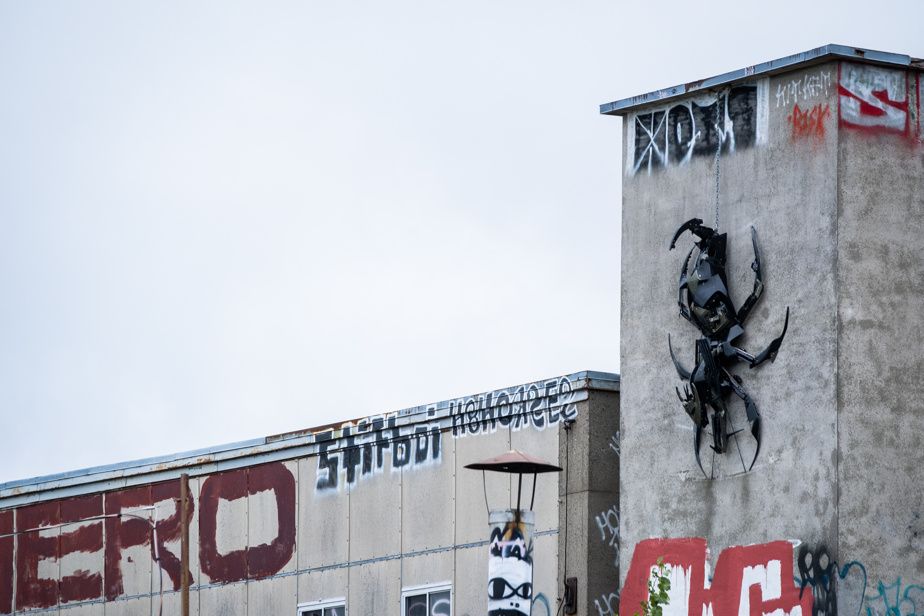
PHOTO CHARLES WILLIAM PELLETIER, SPECIAL COLLABORATION
The spider sculpture Halo is still clearly visible at the corner of Saint-Patrick and De La Vérendrye streets.
In Montreal, JUNKO has notably put its mark on the skatepark under the Van Horne viaduct, on the Saint-Jacques cliff and in the vacant lots of LaSalle.
But it is undoubtedly in Mercier–Hochelaga-Maisonneuve that the artist from Nova Scotia struck the hardest.
His sculpture even serves as a logo for the Mobilization 6600 group, which is behind the creation of a nature park between the Steinberg and Vimont woodlands, but which is also leading a fight to counter the nuisances of Ray-Mont Logistics, which is developing a large transshipment platform.
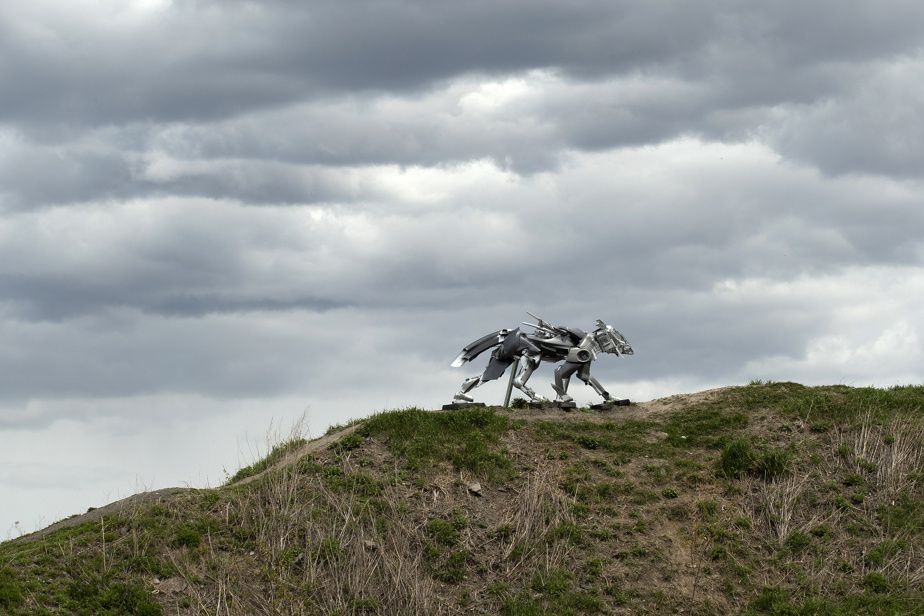
PHOTO ROBERT SKINNER, LA PRESSE ARCHIVES
In 2021, JUNKO placed his work Starfox at the top of a hill separating a railway wasteland in the Viauville district from the land of the Ray-Mont Logistics company.
A hill separates the company’s vast land located very close to the port of Montreal. Originally, in 2021, JUNKO installed a sculpture entitled Starfox. The work was intended for a project that aborted, he explained to The Pressbut ultimately, it was an ideal location given the resistance movement in the neighborhood.
Read “Mobilization 6600: a victory, but the fight continues”
At the time, recalls Anaïs Houde, co-spokesperson for Mobilization 6600, members of the group had just held a large demonstration, frustrated that the City had lost in the Court of Appeal in its legal series against Ray-Mont Logistics. “When JUNKO installed his sculpture at the top of the hill, it caused a stir within the mobilization and it created incredible momentum to make our struggle known,” says Anaïs Houde.

PHOTO CHARLES WILLIAM PELLETIER, SPECIAL COLLABORATION
JUNKO’s work Forest Spirit
Or, Starfox – which is also found on the cover page of a comic strip signed Jean-Félix Chénier and Yoakim Bélanger — was vandalized, but its creator gave it a successor, The spirit of the forest. Made up of natural debris from the surrounding area, the sculpture – which has panache – today occupies the heart of the space created by citizens called The Waste Lands.
Anaïs Houde says that people saw JUNKO without knowing it under a hood. “It’s incredible, the gift he gave us. »

PHOTO DOMINICK GRAVEL, LA PRESSE
Anaïs Houde wears the t-shirt of the Mobilization 6600 group which has a work by JUNKO as a symbol.
As for the sculpture River Monster recently appeared on the outskirts of the Wellington Basin, very close to the abandoned P&H Milling silos, it is also in a sector, Bridge-Bonaventure, at the heart of community mobilization so that its redevelopment is on a human scale. “No one tells me how, where and when to do it,” says the artist.
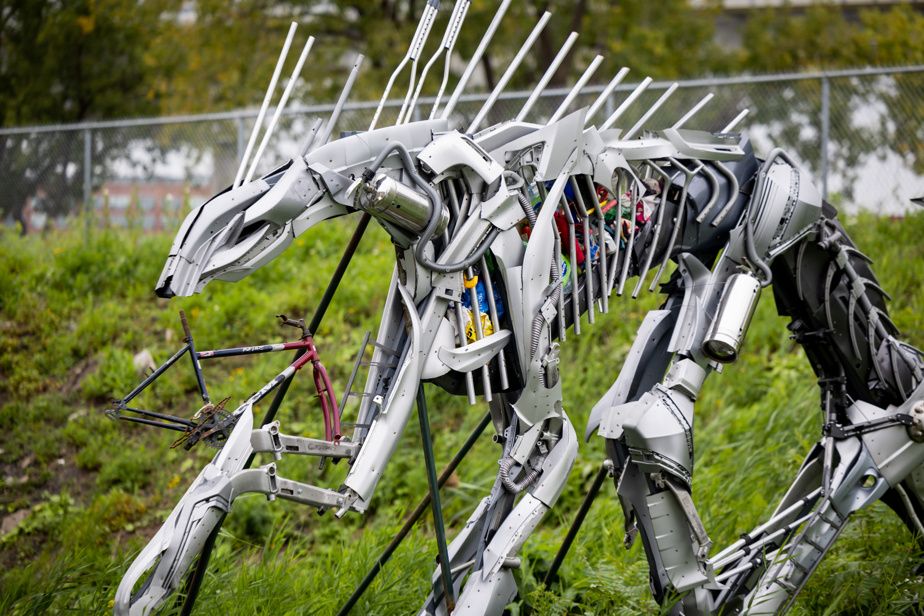
PHOTO MARCO CAMPANOZZI, LA PRESSE
The sculpture that recently appeared near Wellington Basin
Read “How to dream of the Bridge-Bonaventure sector? »

